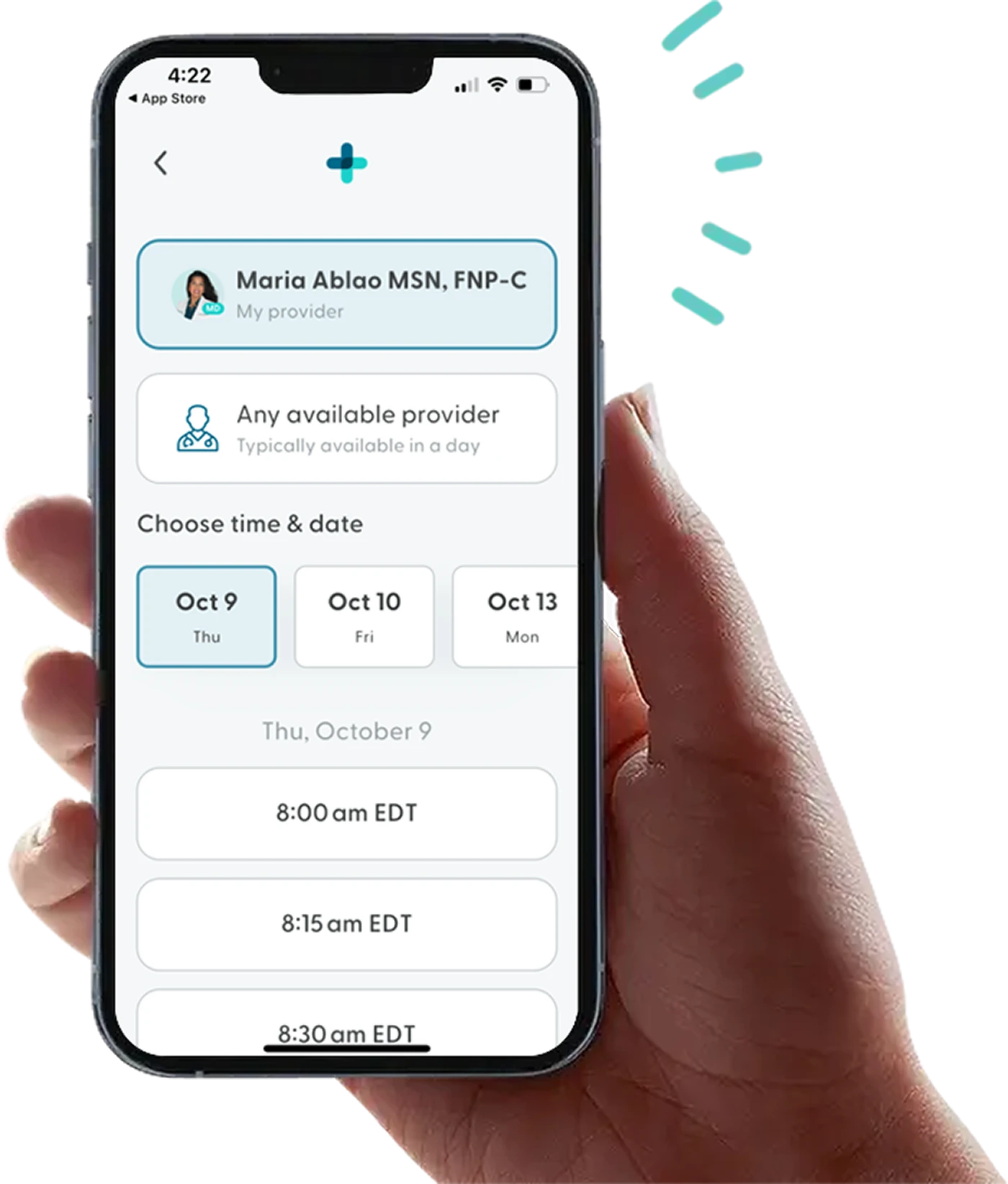Shellfish-Free Diet: Nutritional Alternatives for Missing Nutrients
Shellfish allergies are no small thing – whether you're allergic to crustaceans like shrimp and crab or mollusks like clams and oysters, avoiding these foods is a must. The tricky part is that shellfish often sneak into many dishes, even in sauces and pastes, making it challenging to maintain a completely shellfish-free diet.
But just because you have to skip shellfish doesn’t mean you have to compromise on flavor or nutrition. Finding great alternatives that mimic the taste, texture, and nutritional value of shellfish can be a fun challenge – and it’s totally possible with a little creativity.
Food allergies affecting your daily life?
Speak to a healthcare provider online about your allergy symptoms today.


Understanding Common Shellfish Ingredients
When following a shellfish-free diet, it’s essential to understand the common ingredients that often contain shellfish or shellfish-derived products. These ingredients may not always be obvious, and it’s easy to overlook them while cooking or dining out.
Oyster sauce: This rich, savory sauce, a staple in many Asian dishes, is made from actual oysters. It’s a key ingredient in stir-fries, soups, and marinades, but not suitable for those with shellfish allergies.
Shrimp paste: Common in Southeast Asian cuisine, this fermented shrimp paste brings a salty umami flavor to dishes. It’s a definite no-go for anyone with a shrimp or shellfish allergy.
Mussels: Often found in soups, pastas, and stews, mussels are prized for their briny flavor and tender texture. However, they need to be avoided by individuals with a shellfish allergy.
Clam juice: Extracted from clams, this liquid is used to add depth to seafood soups and sauces. Even though it’s just a liquid, it still carries the risk of triggering allergic reactions.
Why it’s important to avoid these ingredients
Shellfish contains proteins that can trigger allergic reactions in those sensitive to them. When someone with a shellfish allergy consumes these proteins, their immune system reacts, which can result in symptoms ranging from mild discomfort to severe anaphylaxis. This makes understanding where shellfish might be hiding in food and how to avoid it crucial for maintaining health and safety.
Alternatives to shellfish-based sauces and pastes
You don’t have to miss out on that rich umami flavor. There are plenty of plant-based substitutes that can step in for shellfish-based sauces and pastes:
Oyster sauce alternative: A mushroom-based sauce (like shiitake) can provide that deep, umami flavor oyster sauce is known for. You can also find plant-based oyster sauces made from soy or mushrooms, which are perfect for stir-fries and marinades.
Shrimp paste alternative: For that salty, savory kick, miso paste (fermented soybeans) or tempeh are great options. If you want something with an oceanic twist, seaweed-based products can replicate the briny, deep flavors without the shellfish risk.
Vegetarian oyster sauce: Soy and mushroom-based sauces can work wonders as substitutes. Combining soy sauce with mushrooms like shiitake or porcini gives you a savory sauce that mirrors the taste of oyster sauce, ideal for Asian-inspired dishes.
These alternatives let you enjoy all the flavor without worrying about allergens, whether you're cooking at home or dining out.
Exploring Seafood Alternatives for Popular Shellfish
Missing mussels, crab, lobster, or shrimp? There are plant-based alternatives that can give you similar textures and flavors, so you won’t feel like you’re missing out:
Mussels: Try hearts of palm or artichoke hearts. When marinated, hearts of palm mimic the texture of mussels in dishes like seafood stews, while artichoke hearts work well in Mediterranean-inspired meals.
Crab meat: Jackfruit is a great substitute for crab meat due to its fibrous texture. It’s perfect in crab cakes, crab salads, or even crab tacos. Another option is imitation crab meat made from plant-based ingredients, which works in dishes that rely more on texture than flavor.
Lobster and scallops: King oyster mushrooms are an excellent alternative to lobster. Their meaty texture is perfect for recreating lobster rolls or bisques. Tofu, pressed and marinated, also offers a firm texture that can stand in for both lobster and scallops in soups or stir-fries.
Shrimp: Konjac root-based vegetarian shrimp offers a chewy texture similar to real shrimp. Jackfruit is another option, with its ability to mimic shrimp’s texture and absorb any marinade or sauce, making it ideal for shrimp tacos or shrimp scampi.
These creative alternatives let you enjoy the textures and flavors you love, while keeping your meals safe and allergen-free.
How to Integrate Shellfish-Free Alternatives into Your Diet
Once you’ve got your alternatives lined up, integrating them into your diet is easy:
Experiment with seaweed: Seaweed can provide that salty, ocean-like flavor you miss from shellfish. Try incorporating it into broths, soups, or even sushi rolls.
Use plant-based ingredients: Tofu, jackfruit, mushrooms, and hearts of palm are all fantastic stand-ins for shellfish textures. These ingredients are versatile and can be used in a variety of recipes, from stews to stir-fries.
Customize your recipes: When a dish calls for shellfish, simply swap in one of the alternatives. Get creative with marinades and seasonings to ensure your dish packs all the flavor you’re craving.
Shopping Tips and Label Reading
Shopping with a shellfish allergy requires a little extra care. Food labels can sometimes hide shellfish-derived ingredients, so being vigilant is key. Look out for terms like "oyster extract," "shrimp paste," or "clam juice." Fish sauces can also be made with shellfish, so always double-check the ingredients.
Brands offering shellfish-free alternatives
There are several trusted brands that offer allergen-free products, such as:
Annie Chun’s: Known for shellfish-free sauces like vegetarian oyster sauce made from mushrooms.
San-J: Their tamari and soy sauces are safe for those with shellfish allergies.
Earth Balance: Their plant-based products make a great alternative to seafood-based ingredients.
Pacific Foods: Offering shellfish-free broths, soups, and broths.
Thai Kitchen: They have a variety of shellfish-free products, like soy sauces and coconut curries.
When shopping, also keep an eye out for vegan or vegetarian brands, as many of these products are free from shellfish and other animal-based ingredients. Furthermore, if you're unsure about a product, don’t hesitate to contact the manufacturer directly for more information on their ingredient sourcing and processing practices.
By being vigilant while reading labels and opting for trusted, allergen-friendly brands, you can confidently shop for foods that are safe and free from shellfish, helping you maintain a safe and enjoyable diet.
Staying Safe While Dining Out
Dining out while managing a shellfish allergy can be a bit tricky, but with the right approach, you can enjoy meals safely. Here are some tips for navigating restaurant menus and communicating your dietary restrictions.
When dining out, it’s crucial to be proactive about your shellfish allergy. Always be sure to inform your server about your allergy as soon as you're seated, even if the menu doesn't seem to feature shellfish prominently. Be clear that you're allergic to shellfish, not just intolerant, so they understand the seriousness of the situation.
Some restaurants might also be able to make adjustments to a dish to accommodate your needs, so don’t hesitate to ask. It’s a good idea to explain exactly which shellfish you need to avoid – shrimp, crab, lobster, oysters, etc. – and ask if the restaurant has separate preparation areas to avoid cross-contamination.
Certain dishes are more likely to contain shellfish or come into contact with it during preparation. When in doubt, ask the right questions to ensure your meal is prepared safely. Here are some questions you can ask the server:
"Does this dish contain shellfish or shellfish-based products like oyster sauce or shrimp paste?"
"Can this dish be made shellfish-free or vegetarian?"
"Are there any items in the kitchen that may cause cross-contamination with shellfish, such as shared fryers or prep surfaces?"
"If I order this dish, will it be cooked separately from any shellfish dishes?"
By being clear, direct, and polite with your communication, you can help ensure that your dining experience is safe and enjoyable. Most restaurants are happy to accommodate food allergies, especially when you approach them with a thoughtful, proactive attitude. Always trust your instincts, and if you’re ever unsure about a dish, it’s safer to pass on it or ask for a different option.
Where Can I Learn More About Managing Food Allergies?
With LifeMD, you can speak with a licensed healthcare provider about what to do if you suspect you’re allergic to shellfish. They can give you tips for keeping yourself safe during an allergic reaction and alternate food options to consider.
Make an appointment today to learn more about managing a shellfish allergy.
More articles like this
Feel better with LifeMD.
Your doctor is online and ready to see you.
Join LifeMD for seamless, personalized care — combining expert medical guidance, convenient prescriptions, and 24/7 virtual access to urgent and primary care.

 Medically reviewed and edited by
Medically reviewed and edited by 








